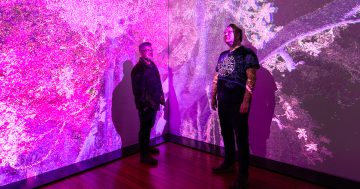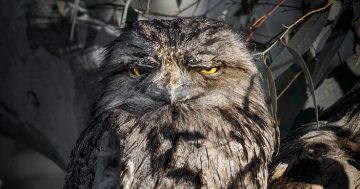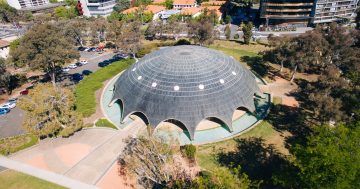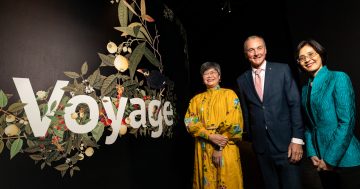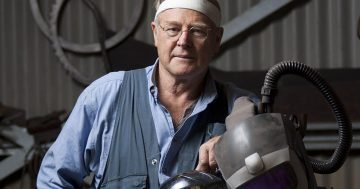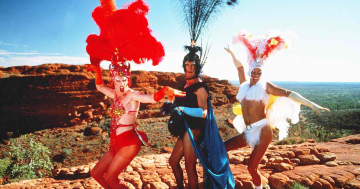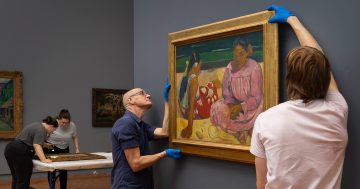
Artist Dan Power with the skeleton of the spotted-tail quoll he reconstructed for Wildbark at Mulligans Flat. Photo: Lauren Brown.
Dan Power loves dead things. His passion for them is matched only by the love he has for science, and in turn, the environment in which he lives.
As a youngster, he was always bringing home things in bottles and his mother “had conniptions” when she discovered he had a pet redback spider.
“We’d go on bushwalks when I was a kid and I’d bring back skulls. She let me take them home and I’d clean them with bleach, which of course, I know now, was the absolutely wrong way to clean them,” Dan said.
“But she was always very encouraging.
“I have been collecting dead things since I was about three, especially attracted to skulls and bones and I’ve built up quite a collection – much of it has integrated its way into my arts practice.”
He is also learning the art of taxidermy.
Today, the 31-year-old is living his near-perfect life. During his day job at Questacon, he talks to people about science, the environment, and how important it is to save our planet.
The rest of his time is spent as an increasingly well-known artist who, in his first competition, won the Waterhouse Natural Science Art Prize For Emerging Artists in 2016.
“That was a great affirmation for me as an artist,” he said. “It was also the first big validation that science and art can, and do, belong together. It is a big thing for me to have that just as I was starting off on my artist’s journey.”
And importantly, the prizemoney helped him work as an artist in Europe for six months.
Dan’s “thing” for bones led him to one of his most important and enjoyable commissions – Canberra’s environmental oasis that is Wildbark at Mulligans Flat.
The artist was approached by Wildbark after one of its spotted-tail quolls, now an endangered species, died of natural causes.
Because the law states the remains of native Australian animals and birds can’t be used in taxidermy, Dan had never worked on a quoll. But because of special circumstances – Wildbark wanted to preserve it for research purposes – he was allowed to work on its bones. The pelt went to the Australian Museum, but the bones were sent back to the Canberra sanctuary.
“Most native Australian species are protected – the law says it is illegal to collect, possess or sell them. But there are caveats if it’s for educational purposes – like what I did for Wildbark. That’s why that job was so special because it’s rare to work with native species. All my work is mostly with invasive species.
“For the Wildbark job, I’d been learning how to articulate bones, teaching myself really. It’s such interesting work but very challenging. It can end up a bit like a macabre jigsaw.”
Dan said his work was a way to “tell the stories of the animals”.
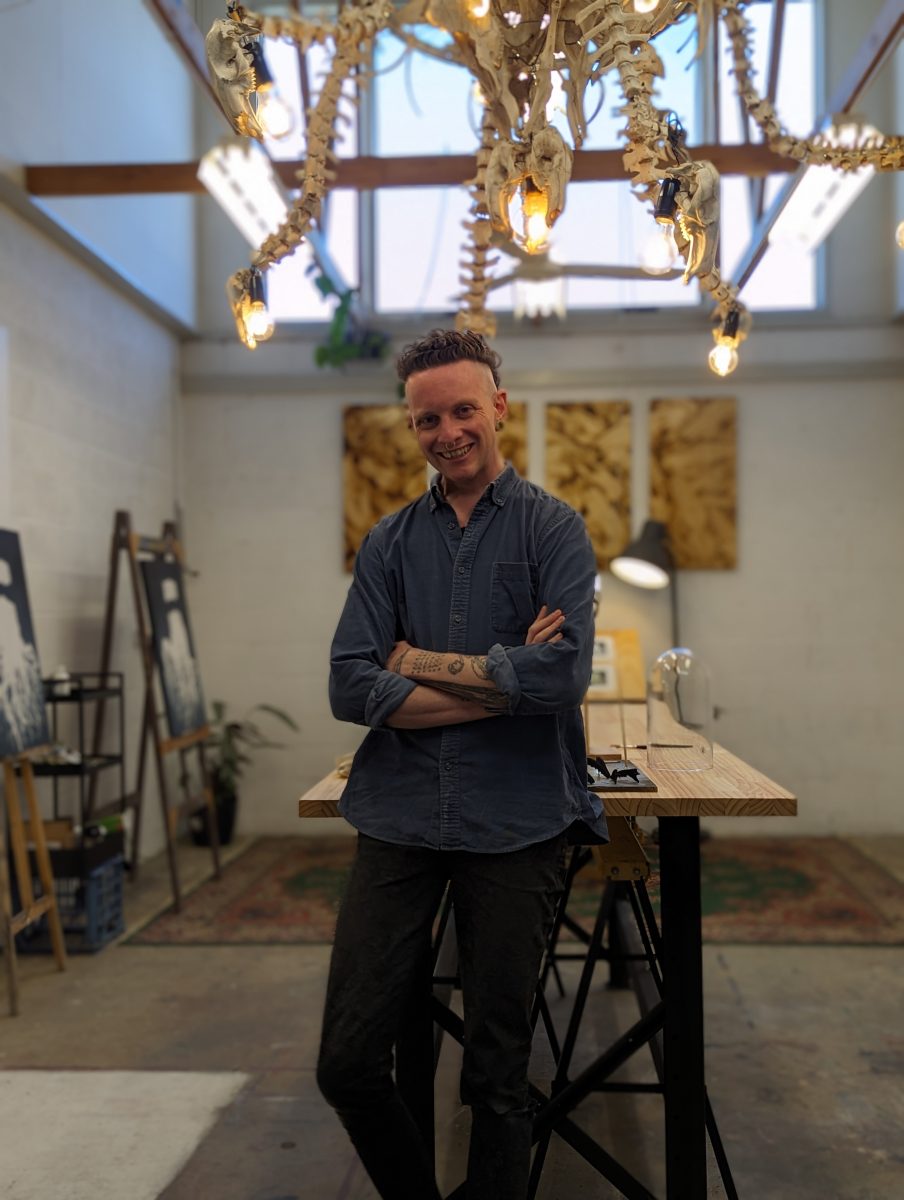
Dan Power: artist, storyteller and part-time scientist. Photo: Dan Power.
“Because it’s against the law to work on dead native animals, even if they’re roadkill, this was a rare opportunity to work on an endangered animal like the quoll.”
Dan has linked up with a taxidermy company in Melbourne to learn more about the skill. “But I’m still awful at it,” he said. “Skeletons are a lot easier because you don’t have to make them look like they’re not dead.
“You just need the basics of anatomy, clean the bones and you’ll get there.”
Dan, who studied evolution and zoology at the Australian National University and finished with honours in 2013, said he weighed up about 10 years go whether to become a research scientist or artist. He chose the latter and has not had a moment’s regret.
Born and bred in the nation’s capital, Dan said he’d “run away a few times but I always seem to come back”.
The artist is currently working on an exhibition in Melbourne which opens early next year. More information about his work is available on his website.
Original Article published by Sally Hopman on Riotact.


